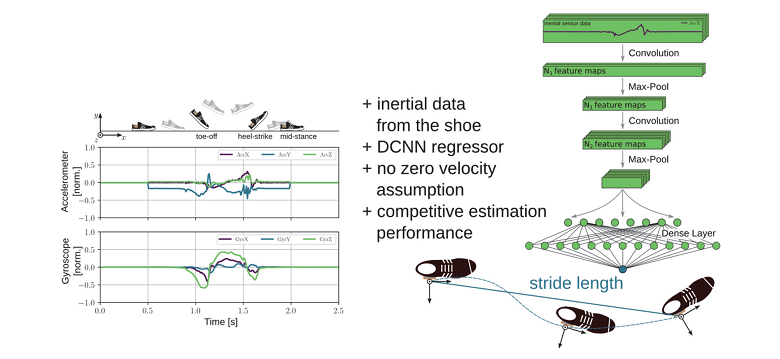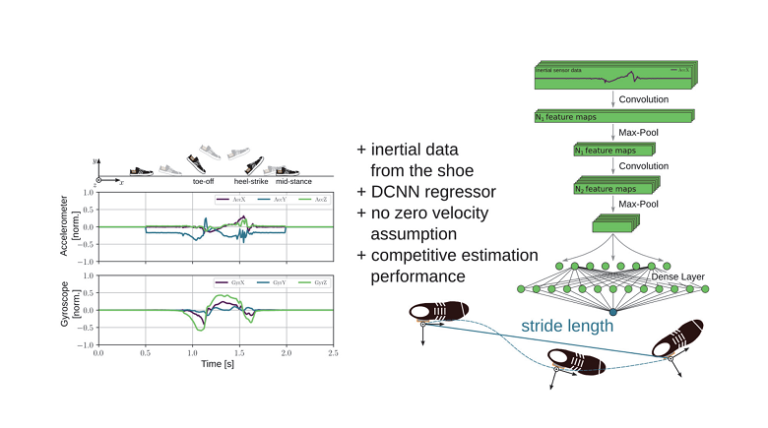
Accurate estimation of spatial gait characteristics is critical to assess motor impairments resulting from neurological or musculoskeletal disease. Currently, however, methodological constraints limit clinical applicability of state-of-the-art double integration approaches to gait patterns with a clear zero-velocity phase. We describe a novel approach to stride length estimation that uses deep convolutional neural networks to map stride-specific inertial sensor data to the resulting stride length. The model is trained on a publicly available and clinically relevant benchmark dataset consisting of 1220 strides from 101 geriatric patients. Evaluation is done in a 10-fold cross validation and for three different stride definitions. Even though best results are achieved with strides defined from mid-stance to mid-stance with average accuracy and precision of 0.01 ± 5.37 cm, performance does not strongly depend on stride definition. The achieved precision further outperforms state-of-the-art methods evaluated on the same benchmark dataset by 3.0 cm (36%). Due to the independence of stride definition, the proposed method is not subject to the methodological constrains that limit applicability of state-of-the-art double integration methods. With more precise mobile stride length estimation, new insights to the progression of neurological disease or early indications might be gained. Due to the independence of stride definition, previously uncharted diseases in terms of mobile gait analysis can now be investigated by re-training and applying the proposed method.

